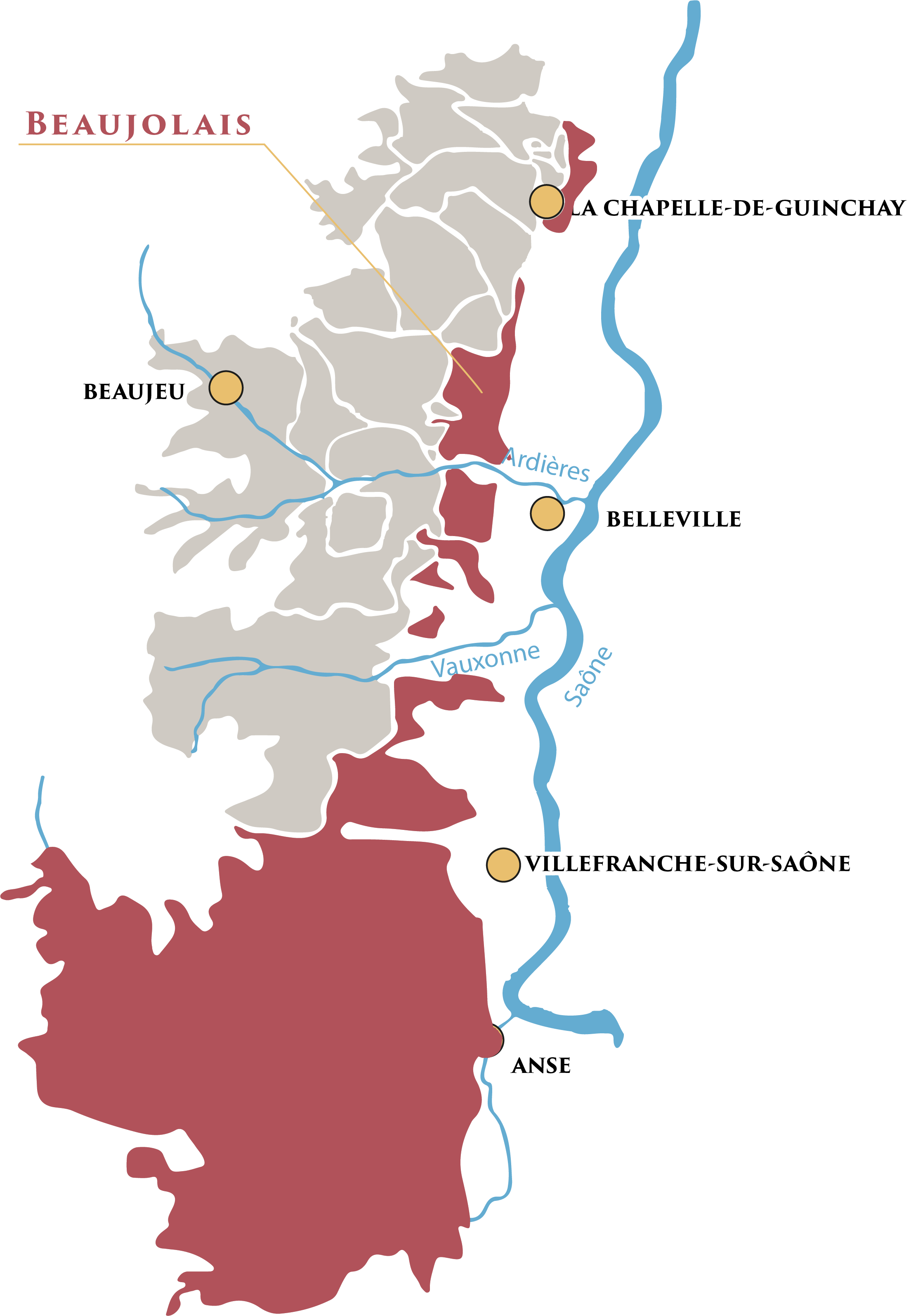Farther east, there are a few large outcrops of shale and volcanic rock.
In the southern part of the largest Beaujolais AOC, we find typical soils from marl or hard limestone from the secondary era (sandstone, white limestone, fossiliferous limestone, golden stone).





